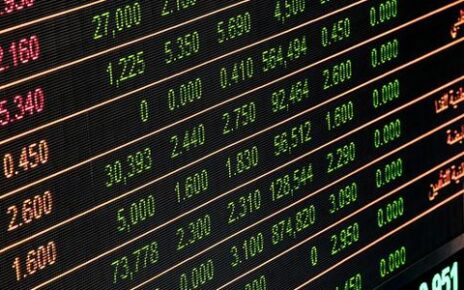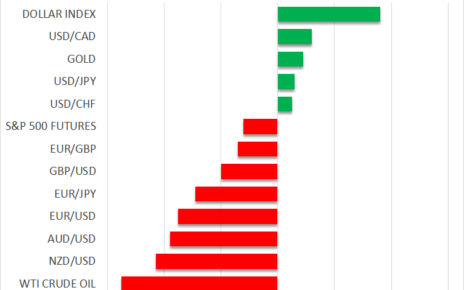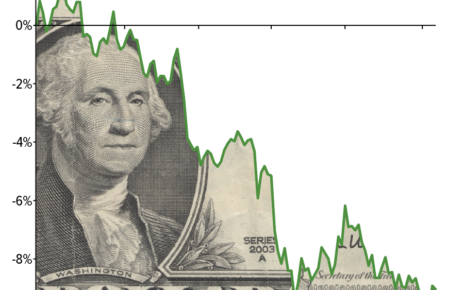In March 2025, the US responsible investments fund market faced a blend of headwinds and selective strength as total net assets (TNA) and estimated net flows (ENF) reflected shifting risk appetites and market performance. The snapshot highlights a decline in assets driven by market weakness, even as certain fund types attracted fresh cash and others delivered notable returns. Across the board, comparisons to prior periods reveal both deterioration and resilience, with year-to-date figures showing declines tied to market moves and a modest recovery in some segments when viewed against a year earlier. The analysis below preserves the original data while expanding context to illuminate how these shifts pattern the responsible investments landscape for March 2025.
Fund Market Overview (March 2025)
The market for US responsible investments funds experienced a broad retreat in March, with total assets under management falling by 18.6 billion dollars, a 4.6% decrease, bringing the aggregate to 390.1 billion dollars at month’s end. This movement underscores how price declines in equities and other risk assets translated into a reduction of asset value across the sector, even as fresh inflows attempted to offset some of the pressure. The estimated net outflows for the month amounted to 2.3 billion dollars, signaling investors’ net withdrawal of capital from the space during March. In parallel, a substantial 16.3 billion dollars were removed due to negatively performing markets, underscoring the impact of broader market performance on the sector’s asset base.
Looking at the year-to-date frame, assets were down by 12.6 billion dollars, representing a 3.1% decrease from the start of the year. Within that cumulative change, estimated net outflows totaled 1.6 billion dollars, highlighting ongoing investor redemptions that contributed to the overall asset decline. When comparing current levels to those from a year earlier, the market shows a gain of 9.4 billion dollars, or 2.5%, in assets, illustrating a partial rebound in asset base relative to the prior year. The one-year asset change figure includes 0.8 billion dollars of estimated net outflows, illustrating that even within a year-long window, outflows and inflows varied across periods and product types.
Performance, measured in US dollars, shows an average monthly return of negative 2.8%. This figure trails the corresponding 12-month moving average by 3.1 percentage points and trails the 36-month moving average by 3.1 percentage points, reflecting a period of underperformance relative to longer-term benchmarks. The combination of outflows, market-driven reductions, and underperformance against moving averages suggests that March 2025 was a challenging month for responsible investments funds in the United States, even as some asset classes and fund types demonstrated resilience or even growth in specific niches.
In sum, March 2025 presented a complex landscape: net outflows and market-driven asset reductions dominated, yet year-to-date and year-over-year comparisons highlighted pockets of strength and variance by asset type. The period’s narrative centers on the tension between net cash movements and the capital base’s sensitivity to market pricing, with the broader market environment casting a shadow over the sector’s overall asset size while still allowing for selective contributors to post gains and positive returns on specific vectors.
Fund Market by Asset Type, March
During March, the distribution of net new money across asset types reveals a clear tilt toward liquidity and risk-off instruments, even as equity exposure faced sizable redemptions. Money market funds attracted the largest share of March inflows, totaling 254.8 million dollars in net new money and marking a notable preference for liquidity during a month characterized by market volatility. This shift aligns with a broader investor tendency to park cash in stable, low-risk vehicles when markets swing, preserving capital while preserving optionality for future allocations.
Commodity funds stood out with net inflows of 20.5 million dollars, placing them in a positive but modest position among asset-type flows for the month. Conversely, alternatives funds displayed a net outflow of 4.9 million dollars, signaling a tilt away from certain non-traditional strategies during March. Equity funds experienced a pronounced negative flow of 2,314.6 million dollars, underscoring a significant relocation away from domestic equity exposure within responsible investments during the period.
Bond funds also faced net outflows, totaling 194.5 million dollars, while mixed assets funds yielded a net outflow of 32.2 million dollars. The composition of flows suggests a cautious stance from investors, with a notable preference for liquidity and a retreat from risk assets such as equities, while fixed income and mixed platforms attracted less favorable dynamics in March.
From a performance standpoint, the month’s leaders and laggards were diverse. Commodity funds produced the strongest performance on average, with a monthly return of plus 4.4%. Money market funds followed with a modest gain of plus 0.3%, reflecting their defensive alignment. Bond funds lagged with a negative return of minus 0.3%, and equity funds registered the steepest declines at minus 3.7%. Mixed assets funds performed at minus 3.0%, while alternatives funds registered a decline of minus 0.4%.
The March data illustrate a clear differentiation between flows and returns across asset types. While money market funds drew inflows and posted a positive return, equities bore the brunt of market pullback, leading to substantial outflows and negative performance. Commodity funds, while not immune to the broader market environment, managed to deliver the strongest relative performance among the major asset classes for the month. The contrast between inflows to cash-like instruments and the ensuing performance dynamics across other asset types underscores how investors navigated the month amid a recovering but uneven market landscape.
Fund Market by Asset Type, Year to Date (YTD)
The year-to-date landscape shows bond funds as the primary recipient of new cash, capturing 790.7 million dollars in net inflows through the first part of the year. This indicates a preference for the stability typically associated with bond exposures within the responsible investments universe as investors sought shelter from equity volatility and inflation concerns. Money market funds followed closely, attracting 455.4 million dollars in net inflows, reinforcing the ongoing demand for liquidity and short-duration instruments in a risk-off environment.
Commodity funds posted 60.8 million dollars in net inflows in the YTD period, reflecting continued, albeit modest, interest in commodity-oriented strategies within responsible investments. Equity funds, by contrast, experienced significant outflows, totaling 2,762.3 million dollars, underscoring persistent risk-off sentiment regarding domestic equities among investors in the early part of the year.
Mixed assets funds reported net inflows of 162.8 million dollars, while alternatives funds registered 35.9 million dollars in net inflows for the year to date. The overall YTD picture illustrates a bifurcated market where fixed income, cash-like vehicles, and certain commodity-oriented strategies attracted capital, while equity exposures faced substantial withdrawals. These dynamics are consistent with an investor base prioritizing capital preservation and more defensive positioning in the face of ongoing market uncertainty and macroeconomic volatility.
In terms of performance, commodity funds led the YTD gains with an average return of 3.2%, followed by bond funds at 1.8% and alternatives funds at 1.4%. Equity funds, however, posted a negative return of minus 2.1%, indicating continued underperformance relative to other asset types through the year to date. Mixed assets funds experienced a decline of minus 0.9%, while money market funds achieved a positive return of 1.0%. The pattern here aligns with the flows: defensive, yield-oriented, and commodity-oriented vehicles delivered better relative performance so far in the year, while equity exposure lagged behind, consistent with risk-off sentiment and market dynamics.
The YTD data emphasize how asset allocation decisions in the early months of 2025 favored securities with lower downside risk and higher liquidity, even as some investors positioned for eventual growth opportunities in commodity-linked or diversified fixed-income strategies. The continued outflow from equity funds alongside inflows to bonds and cash-equivalent instruments points to a risk management mindset among fund managers and investors as they navigated a complex macroeconomic environment.
Fund Market by Asset Type, Last Year (12 Months)
Over the twelve-month horizon, the asset-type flows show a markedly different pattern, with bond funds attracting the largest net inflows by a wide margin, totaling an impressive 3,750.9 million dollars. Money market funds followed with 940.2 million dollars in net inflows, while alternatives funds added 207.7 million dollars. Equity funds, however, faced substantive net outflows of 5,731.8 million dollars, reflecting a pronounced shift away from domestic equity exposure within responsible investments over the year.
Commodity funds posted a modest net inflow of 26.6 million dollars, and mixed assets funds recorded net inflows of 36.1 million dollars for the year. The combined effect of these flows translates into an overall asset mix that, on a year-long basis, favored income-oriented and debt-like exposures, with notable relief from investor risk via liquidity vehicles and certain commodity plays.
All asset types delivered positive returns on the year, underscoring the breadth of gains across the responsible investments spectrum despite significant shifts in capital allocation. Commodity funds posted the strongest annual return at 6.5%, followed closely by alternatives funds at 5.2% and bond funds at 4.9%. Money market funds achieved 4.7% and mixed assets funds delivered 3.7% on average. Equity funds experienced a positive but relatively modest return of 2.0%, while other categories reflected mid-range gains.
The relative performance pattern highlights a year in which risk-off, income, and inflation-hedging strategies contributed meaningfully to portfolio results, while pure equity exposure faced material headwinds. The outsized inflows to bond funds and money market funds, along with strength in commodity-focused funds, suggest a reservoir of capital seeking yield, capital preservation, and diversification. This backdrop aligns with a broader market environment that rewarded defensive positioning and yield-oriented approaches, even as equity-oriented strategies faced ongoing challenges.
Lipper Fund Classifications, March
March’s Lipper fund classifications reveal a clear tilt in net new money toward more liquid, defensive, and sector-specific niches. Money Market Funds led March inflows with +$209.3 million, signaling ongoing investor preference for high-liquidity, capital-preserving instruments in a volatile market environment. Large-Cap Growth Funds also attracted +$77.7 million, indicating continued appetite for selective growth exposures despite broader market pressures. Specialty Fixed Income Funds demonstrated +$63.5 million in net inflows, underscoring demand for diversified fixed-income strategies within responsible investing.
On the risk-off and hedging side, the largest total net outflows occurred in Multi-Cap Core Funds, which saw -$529.8 million leave the space, reflecting investor rotation away from multi-cap core strategies during the month. Global Large-Cap Core Funds followed with -$393.6 million, and Multi-Cap Growth Funds with -$295.3 million. These movements illustrate a preference for more targeted or alternative fits within fixed income and global equities, as investors reallocate away from certain diversified equity mandates.
The month’s best performing funds in the Lipper classifications were Commodities Base Metals Funds, delivering +16.3% on average, followed by Commodities Precious Metals Funds at +9.9%, and India Region Funds at +6.5%. The standout underperformer was Health/Bi Biotechnology Funds, which declined by -17.6%. Science & Technology Funds (-11.7%) and Large-Cap Growth Funds (-7.7%) also posted notable declines, highlighting the areas where performance lagged within March’s broader market context.
Beyond the numbers, the March classifications narrative points to a market environment where commodity-driven strategies and certain niche themes delivered strong relative performance, while broader health tech and large-cap growth exposures faced meaningful headwinds. Investors continued to seek liquidity and defensive playbooks in the face of volatility, reinforcing the importance of alignment with strategic goals in selecting Lipper-classified funds during periods of market stress.
Lipper Fund Classifications, Year to Date
In the year-to-date view, money market funds managed +$508.5 million in net inflows, underscoring persistent liquidity preference as the market environment remained cautious. International Large-Cap Core funds added +$477.2 million, while Large-Cap Growth Funds attracted +$435.9 million, signaling continued demand for core, growth-oriented strategies within a global context.
On the other hand, the largest YTD outflows occurred in Global Large-Cap Core Funds, which saw -$909.8 million flow out, followed by Multi-Cap Growth Funds at -$648.5 million and Multi-Cap Core Funds at -$460.8 million. This distribution suggests investor reallocations away from broad, global large-cap exposure and multi-cap constructs toward more selective strategies and money market or core fixed-income vehicles.
The best performing fund classifications for the year to date were Commodities Precious Metals Funds, with +19.3% on average, followed by Commodities Base Metals Funds at +14.6% and China Region Funds at +10.7%. The weakest performers were Health/Biotechnology Funds at -23.4%, Science & Technology Funds at -14.0%, and Mid-Cap Growth Funds at -9.5%. These results illustrate how commodity-linked themes and region-specific plays captured outsized gains, while health and technology-laden growth funds faced meaningful drawdowns as market conditions evolved.
Taken together, the YTD Lipper classifications reveal a market rotating toward inflation-hedging and commodity-related exposures, with a notable emphasis on liquidity and thematic diversification. The outflows from global large-cap core and multi-cap growth funds indicate a strategic reassessment by investors who sought to reallocate toward more targeted or defensively positioned assets, balanced by the attractive year-to-date performance of commodity-focused funds in the face of ongoing macro volatility.
Lipper Fund Classifications, Last Year
Over the last year, the distribution of net flows across Lipper classifications shows a strong tilt toward global scale and core fixed-income strategies, with Global Large-Cap Core Funds posting the largest net inflows at +$2,565.9 million, followed by Large-Cap Growth Funds at +$2,300.5 million, and Core Bond Funds at +$1,878.9 million. These inflows reflect sustained demand for core, large-cap and fixed-income exposures within responsible investing over the year.
In contrast, the largest net outflows occurred in Multi-Cap Growth Funds, which attracted -$1,993.8 million, followed by Multi-Cap Core Funds at -$1,601.2 million and Alternative Energy Funds at -$1,600.3 million. The pattern indicates a shift away from more expansive multi-cap growth and alternative energy strategies during the year, pointing to a preference for core and more traditional themes amid the evolving market landscape.
The year’s best performing fund classifications were Commodities Precious Metals Funds, delivering +40.5% on average, followed by Equity Leverage Funds at +28.1% and China Region Funds at +27.5%. The weakest performers were Health/Biotechnology Funds at -43.3%, Alternative Event Driven Funds at -13.2%, and Alternative Energy Funds at -10.9%. These results illustrate a broad dispersion in performance, with commodity and leverage-oriented exposures delivering significant gains, while certain health and energy-related strategies faced substantial weaknesses.
Overall, the last year’s Lipper classifications reflect a market that rewarded commodities and leveraged or region-specific strategies, while penalizing a subset of health-driven and energy-related themes. Investor sentiment during this period favored strategies with potential for outsized gains in commodity and global themes, even as broader health and specialized energy funds faced headwinds. The data underscore the importance of diversification and ongoing evaluation of thematic exposures within responsible investing.
Conclusion
The March 2025 snapshot of LSEG Lipper’s US Mutual Funds & Exchange-Traded Products for responsible investments reveals a market navigating a difficult environment, with a clear interplay between outflows driven by market weakness and selective inflows into liquidity and certain thematic strategies. The overall assets declined, reflecting market declines that dwarfed some inflows, while year-to-date and year-over-year comparisons show a more nuanced story: assets retreat in the near term but still register growth against the prior year, signaling resilience amid ongoing volatility.
Across asset types, the pattern in March pointed to a preference for cash-like instruments and commodities or commodity-linked strategies among the inflows, while equities faced substantial outflows and negative monthly performance. In the year-to-date frame, bond and money market funds emerged as the primary beneficiaries of inflows, underscoring risk-off positioning in the near term, while equities experienced meaningful withdrawals. The last twelve months highlighted robust inflows to core and global large-cap and fixed-income classifications, paired with exuberant gains in commodity-focused funds, yet marked declines in health/biotechnology and certain energy-related funds.
Lipper classifications echo this broader narrative: defensives, liquidity-centric funds, and commodity plays delivered the strongest performance and attract the majority of new money in several periods, while more expansive multi-cap growth, global core, and alternative energy funds faced outsized outflows. The sector’s performance underscores a market environment where investors sought capital preservation, yield, diversification, and select growth opportunities, balancing risk against potential returns.
In sum, March 2025’s data illustrate a dynamic market for responsible investing, characterized by cautious flows, selective strength in certain niches, and a clear emphasis on liquidity, fixed income, and commodity exposure in both flows and returns. The evolving mix of asset types, fund classifications, and performance outcomes points to a continued need for strategic asset allocation grounded in long-term objectives, risk tolerance, and ongoing evaluation of market conditions. Investors and fund managers alike should remain attentive to how macroeconomic shifts, inflation expectations, and sector-specific developments influence the behavior of responsible investment funds in the months ahead.



